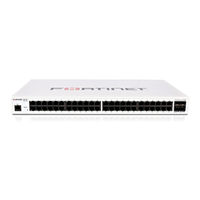Fortinet FortiGate FortiGate-800F Manuals
Manuals and User Guides for Fortinet FortiGate FortiGate-800F. We have 6 Fortinet FortiGate FortiGate-800F manuals available for free PDF download: Administration Manual, Install Manual, Installation Manual, Quick Start Manual
Advertisement
Advertisement
Fortinet FortiGate FortiGate-800F Quick Start Manual (2 pages)
Fortinet FortiGate FortiGate-800F: User Guide
Table of Contents
Fortinet FortiGate FortiGate-800F Quick Start Manual (2 pages)
Fortinet FortiGate FortiGate-800: Quick Start





